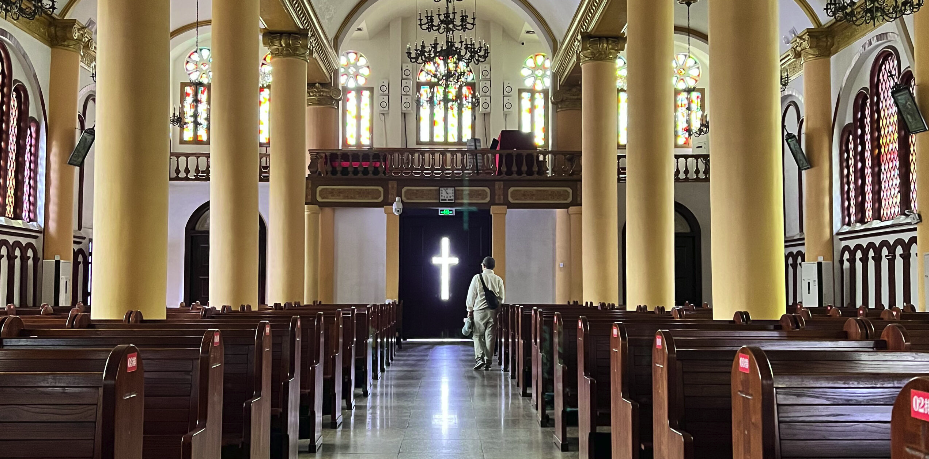One of the crucial characteristics of Chinese churches is the imbalance between the number of believers and pastors, with congregations reaching hundreds or even thousands. Under the traditional church management model, many believers only attend services at weekends, and while churches also organize mid-week gatherings, their coverage is limited. It results in insufficient pastoral care for believers and a lack of commitment to the church on their part.
Group ministries are not new in Chinese churches, and different churches have implemented various forms of group work with diverse effects. However, despite the clear understanding of the church’s situation and the benefits of group ministries among many pastors, it has been difficult to progress. The two churches introduced in this article have indeed brought some new vitality to their congregations through their group ministries, although they are still immature.
Church C is an urban church that expanded its pastoral team by hiring more seminary students under the leadership of a senior pastor in the years before the pandemic. Then, with the onset of the pandemic and the intermittent lockdowns, the church began to explore group ministries as a practical necessity. Group leaders were appointed from among the pastoral staff, and believers were divided into different groups based on their residential areas. It is the only church in the downtown area of the city, and each pastor was responsible for a specific street with further subdivisions into groups under the leadership of designated leaders. The daily activities of these groups included reading the Bible and praying together, as well as on-site gatherings at least once a month to share their experiences from the Sunday services and discuss topics assigned by a pastor after the sermons. Routine matters were handled within the group, and any questions or concerns were reported to the pastor for further guidance.
A minister from Church C said that when establishing the groups, she led each group under her responsibility and searched for potential group leaders. She identified proactive and spiritually hungry members from their WeChat group to assist as liaison officers and help lead the activities. After some time, these liaison officers were promoted to group leaders. Once group leaders were decided, she would conduct training sessions for them. The initial phase was very busy, with weekly training sessions followed by ongoing monitoring of group vitality and accompaniment of the leaders’ growth.
Currently, the group ministries of Church C are still in the experimental stage, and the development of the groups varies due to differences among the believers. Some groups are more active than others. Regardless, the pastors and fellow workers of the church now have a better understanding of the believers’ situation and have gained practical experience in leading the groups.
Church X is a rural church with over a thousand members, mostly middle-aged and elderly. It has only one full-time pastor, Pastor Su, who lives in the city and has been serving in this church for five or six years but is only familiar with a small portion of the believers. In addition, the church has an elder who serves as a volunteer and is highly respected among the believers. However, he holds traditional views and is not in favor of any new changes in the church. Despite the limited conditions, Pastor Su wanted to initiate group ministries in the church.
Knowing the lack of clarity in many believers’ understanding of the gospel and the predominance of idolatrous beliefs, Pastor Su got the idea of forming groups to encourage their spiritual growth.
Pastor Su’s approach to groups can be described as “simple and direct.” Due to her lack of familiarity with the believers, she simply created WeChat groups with a maximum of 25 members each and shared the group QR codes in the main group for believers to scan and join. Once a group reached 25 members, it was automatically formed. She invited familiar and spiritually hungry choir volunteers to serve as leaders, and she established a separate group for them. Daily spiritual teaching was sent to the group leaders, who then forwarded it to their respective groups. After learning the shared content, members would check in within the group, and leaders would oversee the process and report back to Pastor Su.
When interviewed, Pastor Su said that the group ministries had only been in operation for over a month, but the results had been encouraging. The groups were very active, and believers who had been absent from church for some time had resumed their spiritual practices following the group teaching content. They are now willing to attend church services again. Pastor Su noted that the attendance at the Sunday worship services had noticeably increased since the introduction of the groups.
Of course, in the process of group building, she faced challenges. During the transitional period, the daily spiritual teaching was sent to both the main group and the leaders’ group. Some believers who were reserved about the groups chose not to join the subgroup but to learn directly from the main group. After she learned about that, she took several actions. Firstly, she contacted the believers individually to understand the situation. Secondly, she stopped sending content to the large group and instead only communicated through the leaders’ channel. However, due to the current rough grouping method, the leaders did not know all the members, and some reported being rejected when trying to join the WeChat group. Currently, there are many follow-up tasks for the group work, such as training for leaders and organizing on-site gatherings for the groups.
- Translated by Charlie Li












